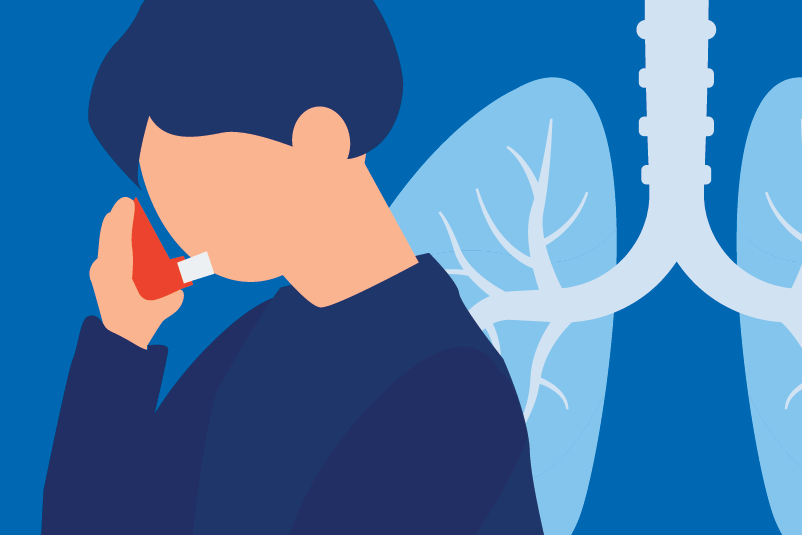#238 In COPD puffers, does three-of-kind beat a pair?

Reading Tools for Practice Article can earn you MainPro+ Credits
Join NowAlready a CFPCLearn Member? Log in
- 2019 systematic review: 4 randomized, controlled trials (RCTs) comparing triple versus LAMA/LABA dual therapy in 9310 patients for 24-52 weeks, usually in patients with ≥1 exacerbation/year.1
- Less exacerbations with triple therapy, Rate Ratio 0.71 (0.60-0.84).
- Clinically important quality of life improvement (2 RCTs):
- 50% versus 44% (dual therapy), number needed to treat (NNT)=17.
- Serious adverse events or discontinuation due to adverse events similar.
- Patients with ≥1 pneumonia: 6.4% versus 3.9% (dual therapy), statistically significant.
- Largest RCT of above systematic review, 6221 patients on umeclidinium/vilanterol/fluticasone (triple therapy) or umeclidinium/vilanterol (LAMA/LABA dual therapy). [Vilanterol/fluticasone arm not reported here].2 At 1 year:
- Exacerbation rate and quality of life similar to above systematic review.
- Patients with ≥1 exacerbation (data from sponsor, statistics by TFP authors):
- Triple 47% versus dual therapy 50% (statistically significant, NNT=36).
- Patients with ≥1 pneumonia: triple 7.6% versus dual therapy 4.7% (statistically significant, number needed to harm=34).
- Other systematic reviews found similar.3,4
- Exacerbations in RCTs defined as moderate (needing oral steroids and/or antibiotics) or severe (leading to hospitalization or death).
- Subgroup analyses suggest individuals with higher blood eosinophil counts (>150-300 cells/µL) benefit more from triple therapy, but amount of benefit is not quantifiable.4,5
- Targeting treatment by eosinophils has not specifically been tested in large RCTs.
- Newest guideline suggests adding ICS in patients who develop further exacerbations on LABA/LAMA therapy (and have blood eosinophil counts ≥100cells/µL).6
- When withdrawing ICS from triple, there is a small (6-8% relative), but not statistically different, increase in exacerbations.7,8
- Average annual cost: ~$1100 for dual versus ~$1700 for triple therapy.9














